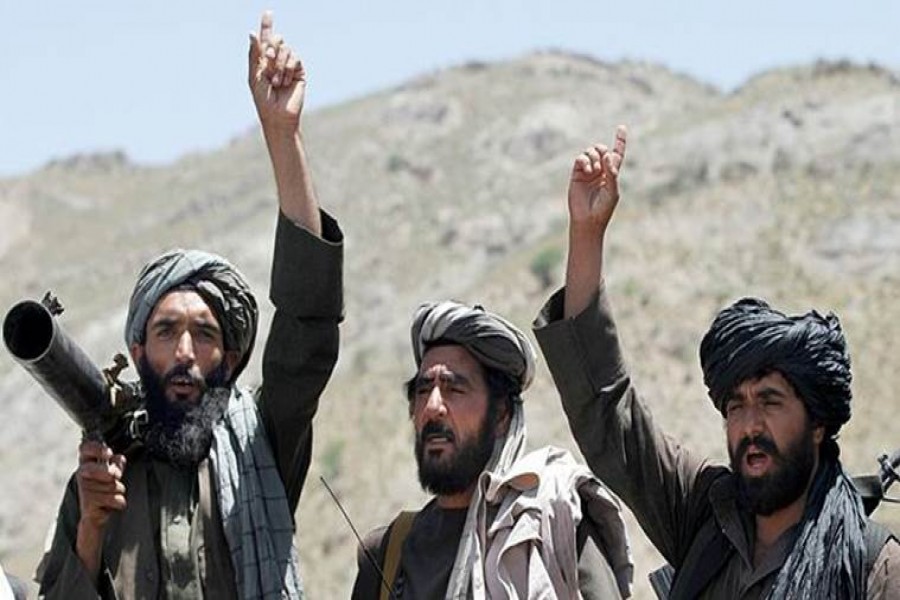
Taliban’s likely return to Kabul will go against India

Eighteen years after the Taliban government in Afghanistan was violently ejected from power by the United States-led coalition, the radical Islamic group is set to make a political comeback — a development that does not bode well for India.
On October 7, 2001, when a United Nations-empowered coalition swooped on Afghanistan in retaliation against the September 11 attack on the World Trade Center, it was all but game over for the Taliban government, then in power.
The US targeted Taliban as it was the ally of the al-Qaeda chief Osama bin Laden, the perpetrator of the 9/11 attack. Bin Laden was in Afghanistan and the Taliban refused to give him up to Washington. The then US president George W Bush moved the UN Security Council which then authorised the invasion of Afghanistan.
All these years later after much violence, deaths of nearly 1.5 lakh people (including Afghan civilians, resistance fighters, troops and US military personnel) and the spread of the so-called US “war on terror” into other countries, the Taliban is returning to Kabul. If they do re-occupy power, even as part of a coalition, it clearly means that the US-led military mission in Afghanistan has failed.
Also Read: UNSC’s move to discuss Kashmir not a good sign for India
Worse, for India, return of the Taliban means the return of an organisation that was hostile to India and very friendly to Pakistan. The reason behind the Taliban’s proximity to Pakistan is that the group was incubated by Islamabad during the Mujahidin’s resistance against the Soviet invasion of Afghanistan in the 1980s.
The 1999 Kandahar Indian Airlines hijack brought to the fore the Taliban’s leanings. The hijackers flew the plane to the Afghan city of Kandahar when the Taliban was in power. The Indian government, under Prime Minister Atal Behari Vajpayee, was forced to concede to the demands of the hijackers.
The then Foreign Minister Jaswant Singh accompanied three Kashmiri separatists, including Jaish-e-Muhammad chief Azhar Masood who had been in jail, and handed them over to the hijackers and secured the release of the 155 hostages even as the Taliban watched without intervening.
The current moves to talk to the Taliban, initiated by the US, comes on the back of the inability of the international forces and the western-supported government of Afghanistan to defeat the rebels militarily.
Though the Taliban government in 2001 was ousted in a matter of days from Kabul, they were never completely neutralised. At present, the federal government in Kabul controls just around 55 per cent of the country, whereas, the Taliban controls 15 per cent. The rest is virtually no-man’s land.
Also Read: Pak has no locus standi on Kashmir, it can only kick itself for self goal
The eighth round of talks concluded recently between the US and the Taliban in the Qatari capital Doha. The Donald Trump administration is eager to move its 14,000 military personnel (plus 17,000 allied troops) out of Afghanistan and the talks are centred on it. Once the coalition military is withdrawn, the Taliban is expected to regain centre-stage in Afghan politics, with US help.
For India, the removal of the Taliban government in 2001 was a godsend as historically, the two nations had shared a close relationship except when under the rule of the Islamic group.
Following the coming to power of the US-backed Hamid Karzai regime in Kabul, New Delhi swung into action to regain its space in Afghanistan. Though India did not send any troops, it has poured in $3 billion worth reconstruction aid, sent experts to rebuild Afghanistan’s infrastructure and established a slew of embassies and consulates across the country.
Pakistan, on the other hand, lost out badly. Its influence on the new set up in Kabul was marginal and the balance of power was tilted towards its arch-rival India.
Amid the violence in the country due to the displacement of the Taliban and the attempts to set up a democratic form of government, Indian interests too were targeted.
Also Read: Trump ‘revelation’ on Kashmir mediation a test balloon?
The 2008 attack on the Indian embassy in Kabul was alleged to be the work of the Taliban or the al-Qaeda in collaboration with Pakistan’s intelligence agency, the ISI. Islamabad, however, had denied its involvement.
Therefore, it’s no surprise when India expressed reservations to the US moves to invite the Taliban for talks to end the conflict and bring about a ceasefire. For the US, the motivation to continue the assault on the Taliban has been somewhat diluted since the capture and the killing of bin Laden in 2011.
The US does not seem unduly perturbed that allowing the Taliban to return to Kabul could mean the tilting of the power balance in favour of its long-time ally Pakistan and against its relatively newfound friend, India.
For the US, its interests alone count. Beyond lip service, at the most, it rarely takes into consideration the views of even its close allies. As for Indian officials, despite cosying up to the US, they probably realise that nothing can be done by it to halt the course in Afghanistan.
New Delhi can only hope that Taliban 2.0 will be a mellowed version of 1.0. Further, since the Taliban may eventually be in government as part of a coalition, it may not have the same unquestioned power as earlier. But the fear is, going by the Taliban’s track record, a foothold is all that it probably needs to edge out its partners in time.
Meanwhile, India too is now ruled by a political dispensation catering to a pro-Hindu agenda. Its moves are likely to irritate the Taliban, like the scrapping of special status to Kashmir and the perceived targeting of the Muslim minority in India. In this context, even if Taliban 2.0 and the Modi government 2.0 intend to start on a fresh note, the signs are worrying for India.


